by Chris Millikan
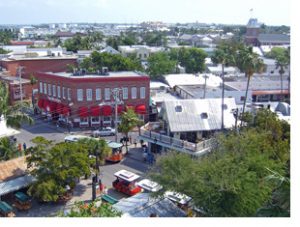 Arriving in legendary Key West just before the crimson sun slips into blue seas, we join celebrating sunset revelers at Mallory Square and all along the waterfront. While artisans peddle unique handicrafts, jugglers, zany acrobats, cats walking tightropes and fire-eaters draw gasps and applause from swirling crowds. Later, like us, many munch succulent seafood in outdoor bistros, toasting passersby with frosty drinks…
Arriving in legendary Key West just before the crimson sun slips into blue seas, we join celebrating sunset revelers at Mallory Square and all along the waterfront. While artisans peddle unique handicrafts, jugglers, zany acrobats, cats walking tightropes and fire-eaters draw gasps and applause from swirling crowds. Later, like us, many munch succulent seafood in outdoor bistros, toasting passersby with frosty drinks…
Still savoring our grilled Wahoo dinners, my hubby and I escape to the quiet comfort of our B&B. Complete with gingerbread trim and veranda, Rose Lane typifies the many white-painted heritage houses in the heart of old town. Following deluxe breakfasts served in its lush gardens next morning, we stroll lively Duval Street, commonly known for nightly bar crawls.
Here, taverns, restaurants, galleries and souvenir shops mingle with historic landmarks, including Key West’s oldest house built in 1829. Relics salvaged from the shipwrecks that made Key West the USA’s richest city still fill this home…I’m fascinated by the detached cookhouse standing out back in perfectly manicured gardens.
Nearby, a three-story mansion bears John James Audubon’s name. Ushering us along its wide veranda, guide Sophie explains, “A celebrated naturalist, Audubon was a frequent guest of master salvager John Geiger, one of Key West’s wealthiest citizens. Inside, she smiles, “These glorious antiques reveal the elegance then commonplace in prosperous homes.”
Viewing some of Audubon’s original drawings upstairs Sophie comments, “Visiting the Keys and Dry Tortugas in 1832, he sighted 18 new species for his milestone Birds of America folio.” And along garden pathways we view the cascading orchids and spiny bromeliads he’d once used in backgrounds; his white-crowned pigeon painting illustrates the same gigantic Geiger tree dominating the front yard today.
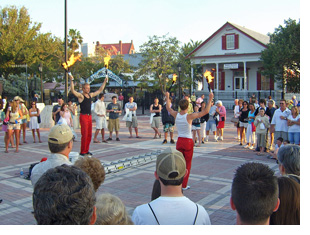 Heritage House Museum also brims with original furnishings and rare artifacts. Preservationist Jesse Porter once hosted celebrities in this Caribbean-Colonial home and Poet Laureate Robert Frost wintered in its secluded garden cottage, now named for him. Amid these luxuriant gardens we listen to his poetry, almost as if Frost himself is reading…
Heritage House Museum also brims with original furnishings and rare artifacts. Preservationist Jesse Porter once hosted celebrities in this Caribbean-Colonial home and Poet Laureate Robert Frost wintered in its secluded garden cottage, now named for him. Amid these luxuriant gardens we listen to his poetry, almost as if Frost himself is reading…
Curry Mansion stands out among historic houses lining Caroline Street. From a rocking chair on the veranda, the elderly concierge explains, “Starting as a penniless immigrant, William Curry soon became Florida’s first millionaire, building this magnificent home in 1855 and furnishing it from his wrecking hauls.
” Nowadays an antique-filled Inn, we explore this Queen Anne-style mansion’s 15 lavish rooms before scrambling up a steep attic ladder to the roof where we achieve spectacular panoramas from its widow’s walk.
At Shipwreck Historeum, actors portray feisty movers and shakers of the day recreating those glory days when wrecked offshore ships produced so many fortunes. Inside, recovered artifacts glitter in an ambience alive with sea-shanty music. From the 65-foot observatory, we scan the reef for wrecks, calling out “Wreck ashore!” over-and-over like captains of old.
Around the corner, we hop on the Old Town Trolley and step off at the Little White House, Florida’s only presidential museum. A guide there explains, “Officer’s quarters on the naval base were converted into Truman’s residence when he first came here in 1946 for rest and relaxation.”
During that time, Harry wrote wife Bess, “I’ve a notion to move the capital to Key West and just stay…” Truman’s family quarters, poker porch, living and dining rooms reflect their lifestyle in their beloved tropical retreat…
The trolley next drops us off in the old Bahamian neighborhood where we join fellow literary pilgrims at Ernest Hemingway’s two-story home. Guide Bob regales us with details of Papa’s audacious life in this Spanish-Colonial mansion, where he wrote prolifically for over ten years.
“While living in Key West, Hemingway was in his 30’s…the prime of his life,” grins Bob, “and here you’ll experience his personal flare: European antiques; artifacts from African safaris; first editions of his books, even boots and saddlebags from hunting expeditions out West.”
 Upstairs, an enormous ginger cat stretches out in the middle of Papa’s bed. “This tomcat descends from Papa’s first six-toed gypsy cat, a gift from a salvage captain,” says Bob. “Polydactyl cats look like they’re wearing mittens…that extra toe y’know…”
Upstairs, an enormous ginger cat stretches out in the middle of Papa’s bed. “This tomcat descends from Papa’s first six-toed gypsy cat, a gift from a salvage captain,” says Bob. “Polydactyl cats look like they’re wearing mittens…that extra toe y’know…”
About fifty ‘Hemingway cats’ roam throughout lush grounds. Along a brick walkway, paw-prints embellish the patio; miniature kitty cottages dot the yard; pussycats snooze everywhere.
And for the departed, a feline cemetery sits in shaded gardens. Nearby, Bob identifies an unusual artifact. “Papa had this drinking fountain built for his beloved cats. On top, a Spanish olive jar from Cuba; the base, a converted urinal trough from friend Sloppy Joe’s Bar…Papa said he’d used it so often, it should be his anyway!”
Papa’s second-story studio remains intact over the old carriage house. I visualize him early each morning, slipping from his bedroom along the old catwalk above the garden.
Surrounded by his favorite mementos…still in their places…he’d be seated on his Cuban cigar-maker’s chair, pounding away on his portable Royal typewriter finishing A Farewell To Arms, a popular war story published in 1929. Here, he also wrote For Whom The Bell Tolls, among others, going on to win the Pulitzer Prize for Fiction and Nobel Prize for Literature.
“Remember, Hemingway’s Key West was unlike anywhere he’d been,” Bob reminds us. “Filled with interesting people from the very well-heeled to down-on-their-luck fishermen and wreckers, he based his fictional characters on them in To Have and Have Not, the acclaimed novel about depression-era Key West.”
And though Key West welcomed many writers over the years, none left as lasting a presence as Ernest Hemingway did…and it takes us only a few days to develop our own appreciation for Key West’s alluring past.
Prized for her colorful heritage, marvelous 19-century mansions and exotic ambience, Key West attracts lively crowds just as in days of old.
About the author:
This week Traveling Tales welcomes the travel writer team of Rick and Chris Millikan who live in North Delta, a suburb of Vancouver, B.C.
Photos by Rick Millikan:
1: Overview of Old Key West.
2: Mallory Square hosts a variety of performers.
3: A descendent of one of Ernest Hemingway’s cats relaxes on his bed.
If you plan to go, check out:
Key West www.keywestattractions.org
Old Town Manor/Rose Lane Villas www.oldtownmanor.com
Audubon House www.audubonhouse.com
Shipwreck Historeum www.shipwreckhistoreum.com
Ernest Hemingway Home and Museum www.hemingwayhome.com
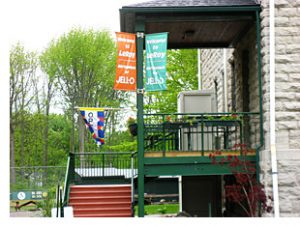
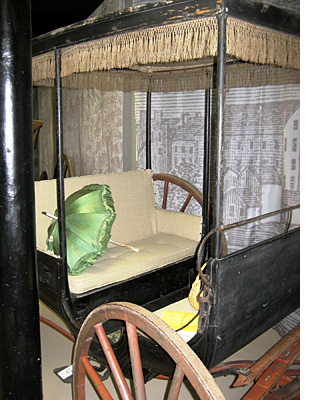 Ruth guides us through an accelerated history of Jell-O, pointing out that they were one of the first companies to use eye catching, full-colour advertisements in magazines. She indicates a series of oil paintings, depicting Norman Rockwell-esque scenes of early Americana-eager, bright-faced children clustered around elaborately molded Jell-O sculptures in glowing oranges, reds and yellows.
Ruth guides us through an accelerated history of Jell-O, pointing out that they were one of the first companies to use eye catching, full-colour advertisements in magazines. She indicates a series of oil paintings, depicting Norman Rockwell-esque scenes of early Americana-eager, bright-faced children clustered around elaborately molded Jell-O sculptures in glowing oranges, reds and yellows.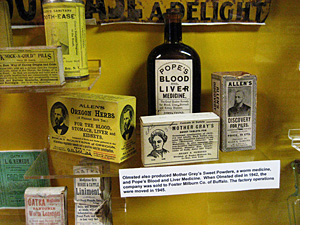 Downstairs, we find a non-Jell-O related display of fascinating memorabilia: locally-manufactured snake-oil remedies, vintage bicycles, buggies and automobiles.
Downstairs, we find a non-Jell-O related display of fascinating memorabilia: locally-manufactured snake-oil remedies, vintage bicycles, buggies and automobiles.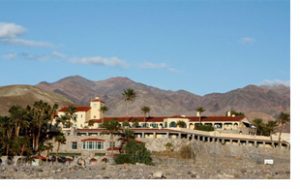
 Also below sea level is the Devil’s Golf Course. Its surface is nowhere near as flat as Badwater Basin’s and walking over the lumpy, salt-crusted terrain is difficult and treacherous. The name correctly implies no one but the Devil would play here and we decide to hike somewhere smoother.
Also below sea level is the Devil’s Golf Course. Its surface is nowhere near as flat as Badwater Basin’s and walking over the lumpy, salt-crusted terrain is difficult and treacherous. The name correctly implies no one but the Devil would play here and we decide to hike somewhere smoother.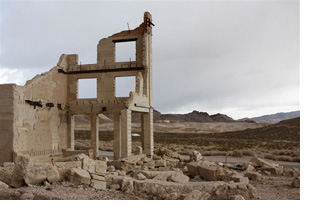 When borax was mined here in the late 1800’s, water was scarce. Mule trains hauling ore out of the Valley also pulled their own water for their journey. In a feat of strength and tenacity, twenty mules pulled three wagons weighing almost 40 tons over 275 kilometers of hot, barren desert in a month long round trip. Although the industry was short-lived, the mule train became a Valley icon and some of that history is preserved at the Borax Museum in Furnace Creek.
When borax was mined here in the late 1800’s, water was scarce. Mule trains hauling ore out of the Valley also pulled their own water for their journey. In a feat of strength and tenacity, twenty mules pulled three wagons weighing almost 40 tons over 275 kilometers of hot, barren desert in a month long round trip. Although the industry was short-lived, the mule train became a Valley icon and some of that history is preserved at the Borax Museum in Furnace Creek.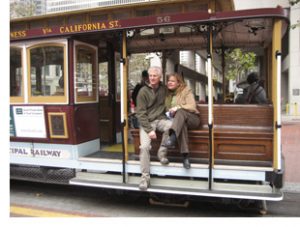
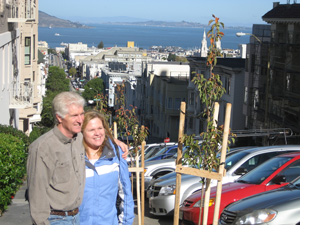 There’ll be lots of palm to palm and heavy breathing going on when we tackle a few of San Francisco’s slopes!
There’ll be lots of palm to palm and heavy breathing going on when we tackle a few of San Francisco’s slopes!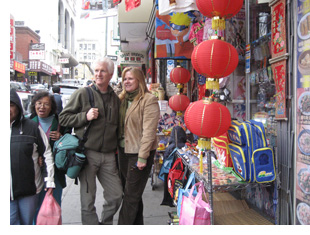 Chinatown, clad in festive colours, offers everything from decorative dragons to delicious dim sum. A short stroll away is the square mile of North Beach where tantalizing Italian coffeehouses, bars and bakeries dish up delicacies, Bohemian style, and if shopping turns us on, Union Square is the place to roam.
Chinatown, clad in festive colours, offers everything from decorative dragons to delicious dim sum. A short stroll away is the square mile of North Beach where tantalizing Italian coffeehouses, bars and bakeries dish up delicacies, Bohemian style, and if shopping turns us on, Union Square is the place to roam.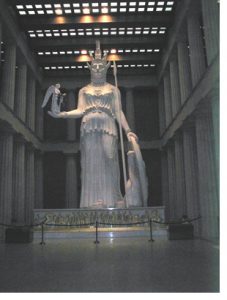
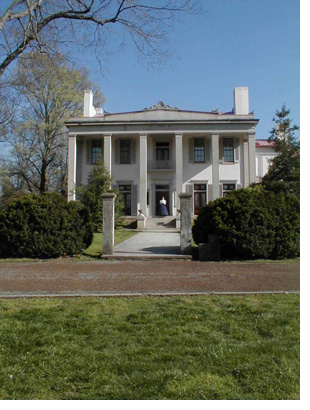 Even thought she is pretty hard to top, some of the flesh and blood women have left a larger than life legacy. Take the nineteen-year-old Selene Harding of Belle Meade Plantation. She was the ultimate cheerleader.
Even thought she is pretty hard to top, some of the flesh and blood women have left a larger than life legacy. Take the nineteen-year-old Selene Harding of Belle Meade Plantation. She was the ultimate cheerleader.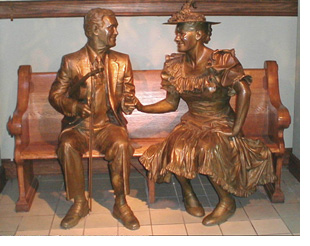 Kitty Wells, first woman to be elected to the Grand Ole Opry and Lula Naff who managed the Ryman Auditorium for fifty years and is credited with collecting the autographed photos, playbills and programs of those who preformed there over the years.
Kitty Wells, first woman to be elected to the Grand Ole Opry and Lula Naff who managed the Ryman Auditorium for fifty years and is credited with collecting the autographed photos, playbills and programs of those who preformed there over the years.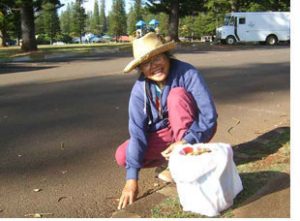
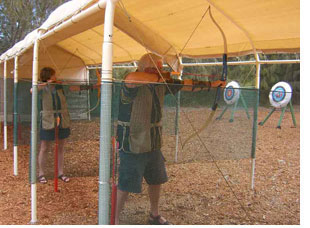 Such hunters may drive, as we do, through a grove of ironwood trees to Lana’i Pine Sporting Clays to hone their prowess. After initial lessons on laser-guided pellet rifles, we’re plinking targets. Next knocking fleches and drawing bowstrings, we plunk arrows around bulls-eyes.
Such hunters may drive, as we do, through a grove of ironwood trees to Lana’i Pine Sporting Clays to hone their prowess. After initial lessons on laser-guided pellet rifles, we’re plinking targets. Next knocking fleches and drawing bowstrings, we plunk arrows around bulls-eyes.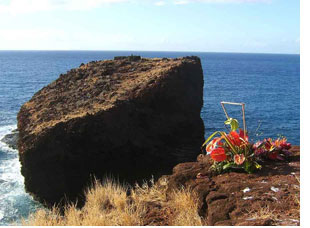 Early the next day we hike along Hulopo’e beach and up a well-worn trail through jagged black lava to visit Sweetheart Rock. Romantic souls had placed a beautiful floral tribute at a cliffside spot overlooking this legendary sea stack topped with a rock tomb.
Early the next day we hike along Hulopo’e beach and up a well-worn trail through jagged black lava to visit Sweetheart Rock. Romantic souls had placed a beautiful floral tribute at a cliffside spot overlooking this legendary sea stack topped with a rock tomb.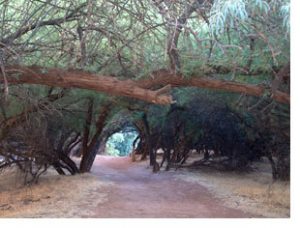
 The canyon walls are sheer and sculpted from a subtle palette of sandstone, ranging from a dramatic red to a pale beige with a rosy tint. The scale of the canyon tricks the eye.
The canyon walls are sheer and sculpted from a subtle palette of sandstone, ranging from a dramatic red to a pale beige with a rosy tint. The scale of the canyon tricks the eye.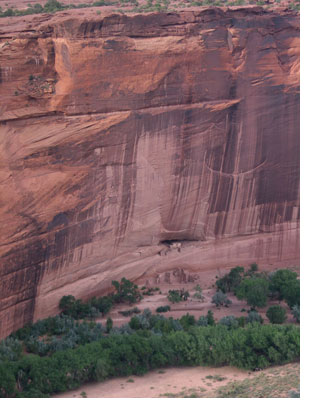 Now our path is level, cutting past an orchard of gnarled old trees, over rock outcroppings and even through a short tunnel cut through the rock. We come out through the trees to a plain dotted with trees and stretching a few thousand feet to the sheer rock face.
Now our path is level, cutting past an orchard of gnarled old trees, over rock outcroppings and even through a short tunnel cut through the rock. We come out through the trees to a plain dotted with trees and stretching a few thousand feet to the sheer rock face.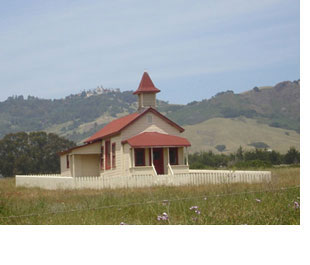
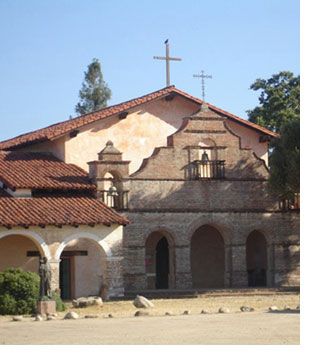 On the inland side of the majestic Santa Lucia Mountains, between the Hearst Castle and US Highway 101, lies a beautiful valley and mission. Mission San Antonio de Padua, the third mission established in the California system, also has historic Hearst connections.
On the inland side of the majestic Santa Lucia Mountains, between the Hearst Castle and US Highway 101, lies a beautiful valley and mission. Mission San Antonio de Padua, the third mission established in the California system, also has historic Hearst connections. Another one of Highway One’s world-renowned locations is Morro Rock, easily found on the outskirts of Morro Bay. Peregrine Falcons, considered endangered species, nest on the top and only the Chumash Indians are allowed to climb, on occasion, for ceremonial purposes.
Another one of Highway One’s world-renowned locations is Morro Rock, easily found on the outskirts of Morro Bay. Peregrine Falcons, considered endangered species, nest on the top and only the Chumash Indians are allowed to climb, on occasion, for ceremonial purposes.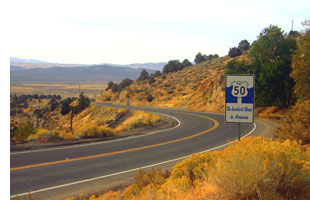
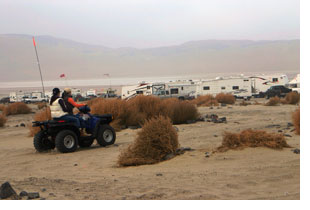 Just an hour down Hwy 50, I discovered Sand Mountain, formed about 4,000 years ago, it towers about 600 feet and attracts sandboarders and ATVers from all over. Adjourning this natural phenomenon is one of the best-preserved Pony Express station houses in Nevada, Sand Springs.
Just an hour down Hwy 50, I discovered Sand Mountain, formed about 4,000 years ago, it towers about 600 feet and attracts sandboarders and ATVers from all over. Adjourning this natural phenomenon is one of the best-preserved Pony Express station houses in Nevada, Sand Springs.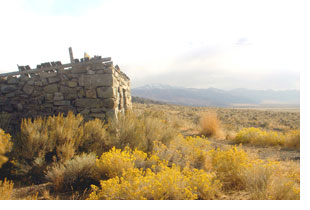 Many other stone structures dot the landscape along Highway 50. These ruins are what remains of tiny hamlets that once dotted the landscape during the mining booms.
Many other stone structures dot the landscape along Highway 50. These ruins are what remains of tiny hamlets that once dotted the landscape during the mining booms.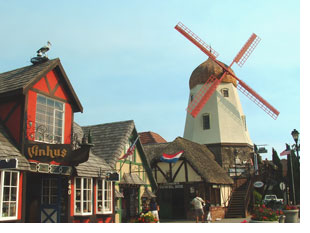
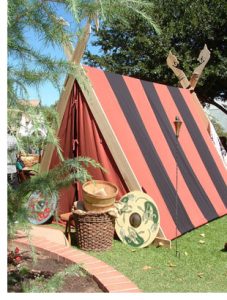 Handcrafted leather goods of Viking/Celtic design are for sale along with Viking bead jewelry at the Viking Traders Tables. I’m going to look for something to set off my eyes. I also intend to take the opportunity to observe demonstrations of weaving, sewing, and cooking and hear about herbal lore done in the context of the ancient peoples of the Nordic/Germanic ancestry.
Handcrafted leather goods of Viking/Celtic design are for sale along with Viking bead jewelry at the Viking Traders Tables. I’m going to look for something to set off my eyes. I also intend to take the opportunity to observe demonstrations of weaving, sewing, and cooking and hear about herbal lore done in the context of the ancient peoples of the Nordic/Germanic ancestry.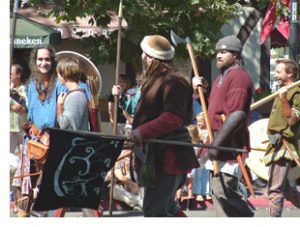 In the early afternoon, people will starting to line up along the sides of Mission Drive in anticipation of the Danish Days Parade. The parade last year was made up of the usual components of marching bands and local officials.
In the early afternoon, people will starting to line up along the sides of Mission Drive in anticipation of the Danish Days Parade. The parade last year was made up of the usual components of marching bands and local officials.